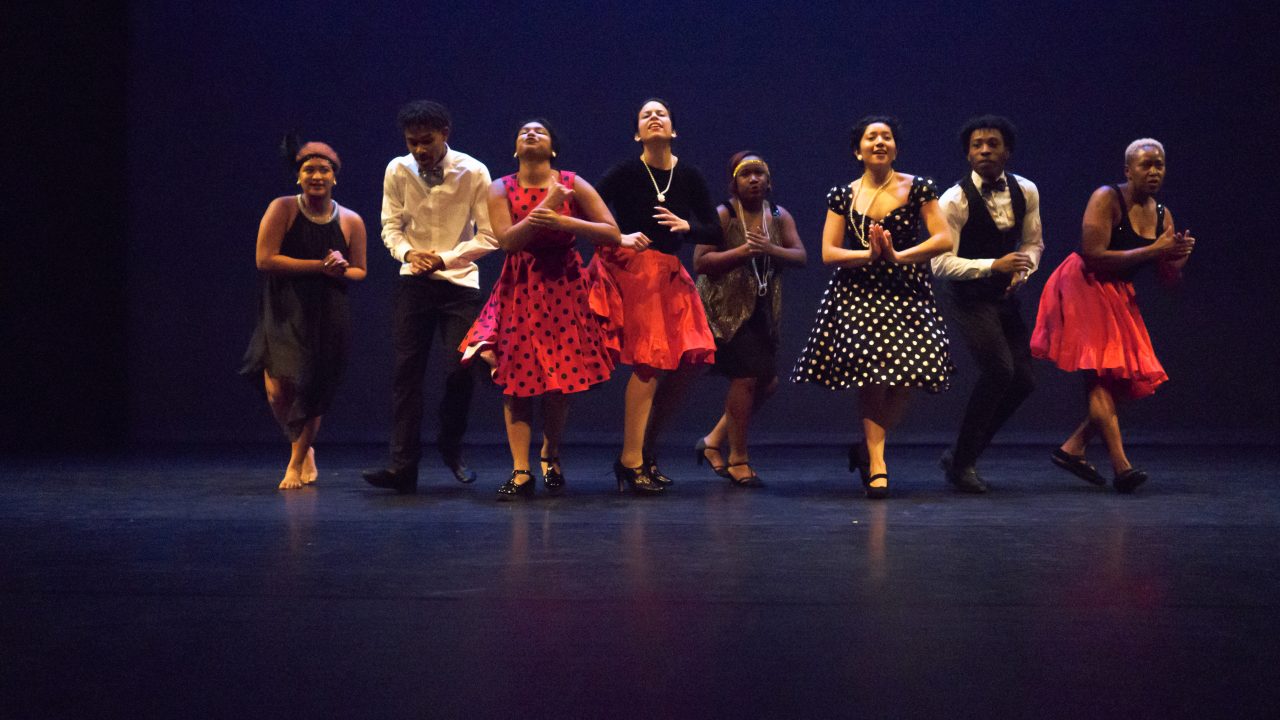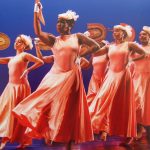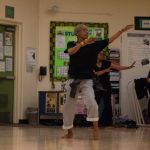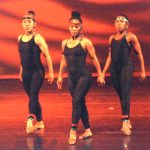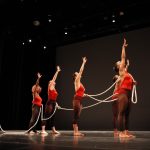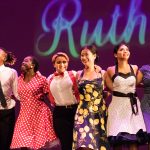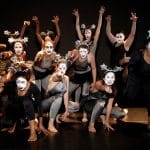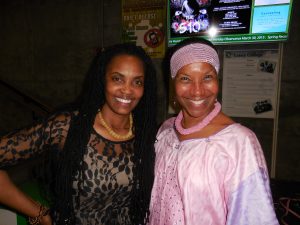A BRIEF HISTORY OF JAZZ DANCE
Modern Jazz Dance, Professor N. Cayou
It all began in Africa. History reveals to us that millions of African people were kidnapped by force from their homeland, and were delivered to the West Indies, South and Central America as well as to the United States for purely economic reasons, free labor, i.e. – the institution of slavery. However, if one looks at the culture of those Africans forced from their homeland, we discover the beginning.
https://images.app.goo.gl/GV65iJhAxpwVAban8
The traditional African arts are essentially utilitarian and social, meaning that, the dance in Africa is not a separated thing, but a part of the total life of the people. There are dances for birth, puberty or rites of passage, marriage, death, etc. Each African culture has its own character in style, formation, and accompaniment, as well as in participation in the dances, but all of the people take part. There is no audience per se because the entire community participates. In addition to the dances that celebrate the main stages of life, there are dances which fall into social categories, as well as dances to produce rain, a good harvest or better crops. There are dances to improve the health of a member of the community. Dances for war and hunting. Dances to tell of a particular historic event and dances that are religious in nature. Each African community has its own special artist, sculptors, fabric-makers, and teachers, but everyone danced!
https://images.app.goo.gl/mgNxXqwFEYaRDsQz9
Allowing for differences within the over-all culture, there are some main characteristics of Jazz dance that can be seen in traditional African dance: the use of bent knees, keeping the body close to the earth, the tendency to use the foot as a whole in that the weight can be rhythmically shifted immediately from one foot to the other, the isolation of body parts in movement, such as only the head, shoulders, rib cage, and hips; the use of rhythmically complex and syncopated movements, polyrhythm: carrying as many as two or three rhythms in the body at once, combining music and dance as a single expression, one feeding the other, individualism of style within a group style and finally, functionalism ~ becoming what you dance, the art of real life.
When the African slaves were taken to the West Indies and to neighboring areas of the Caribbean, they did not forget their cultural expression which was a part of their being. As time went by, European influences merged with the African arts, but the dance and music remained primarily African. Some of the African rhythms and movements that developed in Cuba, Panama and Haiti gave birth to many popular social dances such as the Cha-Cha, Mambo, Samba and Merengue. Religious dances also evolved. In Haiti for example, the Vodun worshippers honored the African gods Dumballa and Shango, both having specific characteristics of African dance.
Wherever slaves were taken, African dance appeared, even if somewhat out of its true context. Often times it was tied with Christianity, since that was the religion forced upon the Africans, as well as with other European influences, but nonetheless its roots were traditional African dance. Unfortunately, in the United States, African dance did not survive so easily.
Again, history tells us that the slavery endured in the United States by Africans and African-Americans was worse than any other institution of slavery in the history of mankind. Not only was enslavement a horror, but thrived in a land where freedom was the thread that held the fabric of the young country together. It was no wonder that in a land where so many values and points of view were dissimilar that all aspects of African life and culture were ridiculed or destroyed. It was believed by most American scholars, that the Africans were devoid of a culture and had no knowledge of their ancestry. Not only were these falsehoods believed by early Americans, but were perpetuated by so-call scientific theories they made up, developed and distributed throughout America. These theories were later proven to be untrue and based solely on ignorance, bias and fear. Further studies have demonstrated that the Africans of the slave areas did indeed have a strong cultural background, and a highly developed one at that.
A rich African mythology developed through the centuries and was spread by word of mouth from generation to generation. Folk tales, riddles, proverbs and poetry were examples of the African heritage. Graphic arts were also highly developed. Other art forms such as, wood and iron working, weaving, sculpting and mask making. Music was one of the most highly developed of the arts and the complexities of African rhythmic structure have yet to be equaled.
A fundamental element of African aesthetic expression was the dance. Music and mask making were incorporated into the wide variety of religious dance forms. Dance could also be of a recreational or secular nature and in one form or another, pervaded in all African life.
The cultural areas that were hardest for the European culture to reach in hopes of destroying were those of the dance and music, as these could be maintained within the institution of slavery through many informal settings. The slave masters tried with all their might to eliminate such cultural expressions in the slaves by prohibiting the playing of drums, singing in their native tongue or language, and the gathering in large groups, (more than two). However, the slave masters were unable to destroy African dance and music completely… thus, the evolution of spirituals, gospels, the blues, jazz music, jazz dance, and yes; even rap and hip-hop in America have deep African roots. Looking at traditional African dance, once can still see the strong similarities between the traditional characteristics mentioned above and the characteristics of American modern jazz dance forms of today.
Original Moves
As stated above; Jazz came out of Africa — an inadvertent import to American with the slave trade. The African people were steeped in rich somatic cultures in which dance was a sacred and a celebratory tradition. In America, African dance was woven through religious ceremony and social assemblies and served to preserve the sense of identity and personal history. From the 1600s on, casual and intentional performances of the explosive, sensuous, grounded and rhythmic dances captured public imagination. It wasn’t long before traveling minstrels copied the choreography, incorporating the cultural artifact into dismissive, humorous shows. But African dance defied racism — it was too seductive and compelling to disparage and discard. Instead, the styles migrated to vaudeville, and then Broadway, along the way inspiring tap and transforming ballet and early modern dance developments.
THE CHARACTERISTICS OF JAZZ DANCE
- The use of bent knees, excluding those times when the dancer is jumping.
- The use of the whole foot, in that the weight can be immediately shifted from one foot to the other.
- The isolation of body parts in movement, such as only the head, shoulders, rib cage, and hips.
- The use of rhythmically complex and syncopated movement.
- Polyrhythm, is when one carries two or more rhythms in the body at once.
- Combining music and dance as a single expression, one feeding the other.
- Individualism of style within a group style.
- Functionalism, becoming what you dance, the art of real life.
All That Style
In the late 1800s and the early 1900s, the decidedly unclassical dance moves unleashed such fads as the Charleston, Jitterbug, Cakewalk, Black Bottom, Boogie Woogie, Swing, and Lindy Hop. Jazz music was borrowing rhythms from African music, especially drumming, and inventing new forms. New Orleans was the epicenter of invention with blues, spirituals, ragtime, marches, and Tin Pan Alley sounds. In 1817, New Orleans set aside an area of parkland called Congo Square for African dance and informal music improvisation. That was seed ground for many jazz musicians and performers and served as an important early venue for one of New Orleans’ most famous exports, the wholly American art form called jazz. But the dancing continued to evolve, mostly settling into a vibrant style known as jazz dance that we now label tap. The rhythms infused even formal European classical ballet, adding a distinctly American twist to a court dance and leading to the hybrid dance forms that evolved in the mid-twentieth century.
Branching Out & Growing Up
A constellation of innovative choreographers indelibly altered the very fluid jazz forms.
Katherine Dunham — From the 1930s on, Dunham incorporated dances she observed on anthropological expeditions to the Caribbean and Africa to study tribal dance into ballet- and modern-focused pieces she created for her own companies.
Dunham, in turn, influenced Alvin Ailey, who choreographed such enduring works for his own company as Revelations, premiered 1960, and set Night Creature to the classic jazz of Duke Ellington. Ailey infused gospel, blues and African-American spirituals with modern dance for his own acclaimed jazzy riff on traditional modern dance.
Primary Movement Qualities: Percussive. Swinging. Sustained.
Secondary Movement Qualities: Collapsing. Suspended. Vibratory.
Broadway and Breakin’
Check out Broadway, the epicenter of performance jazz today, and you’ll find fusion in full flower. A recent revival of Pippin adapted Fosse’s iconic choreography to circus aerials and acrobatics. Lion King is heavily influenced by modern. Cats is really traditionally jazzy, with modern dancers and ballet dancers mimicking the moves of felines. Hamilton adds hip hop to the flavor. When breakdancing comes to Broadway, the result is a high-energy hybrid — just a whole lotta jazz. Tutting, popping, moonwalking and other hip hop styles come from immigrants to the South Bronx from Gambia, Mali and Senegal, West African nations, so jazz doesn’t stray too far from its roots. It is what you can make it — as long as the moves are imaginative and really slick, audiences remain enthralled. The appeal of such rhythmic and sensuous choreography hooks dancers and elicits frequent applause, whether it’s onstage, on the street or on a screen.


